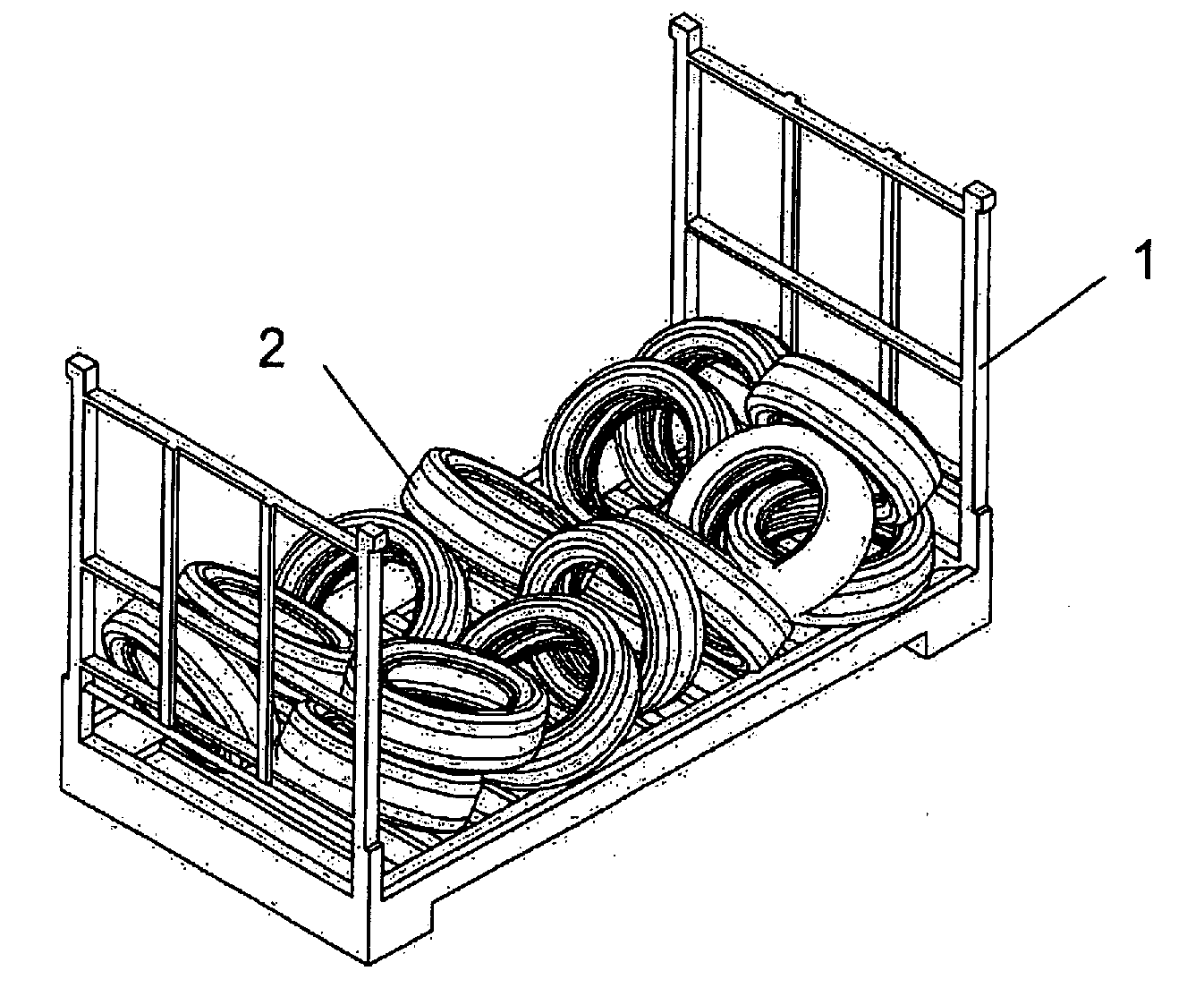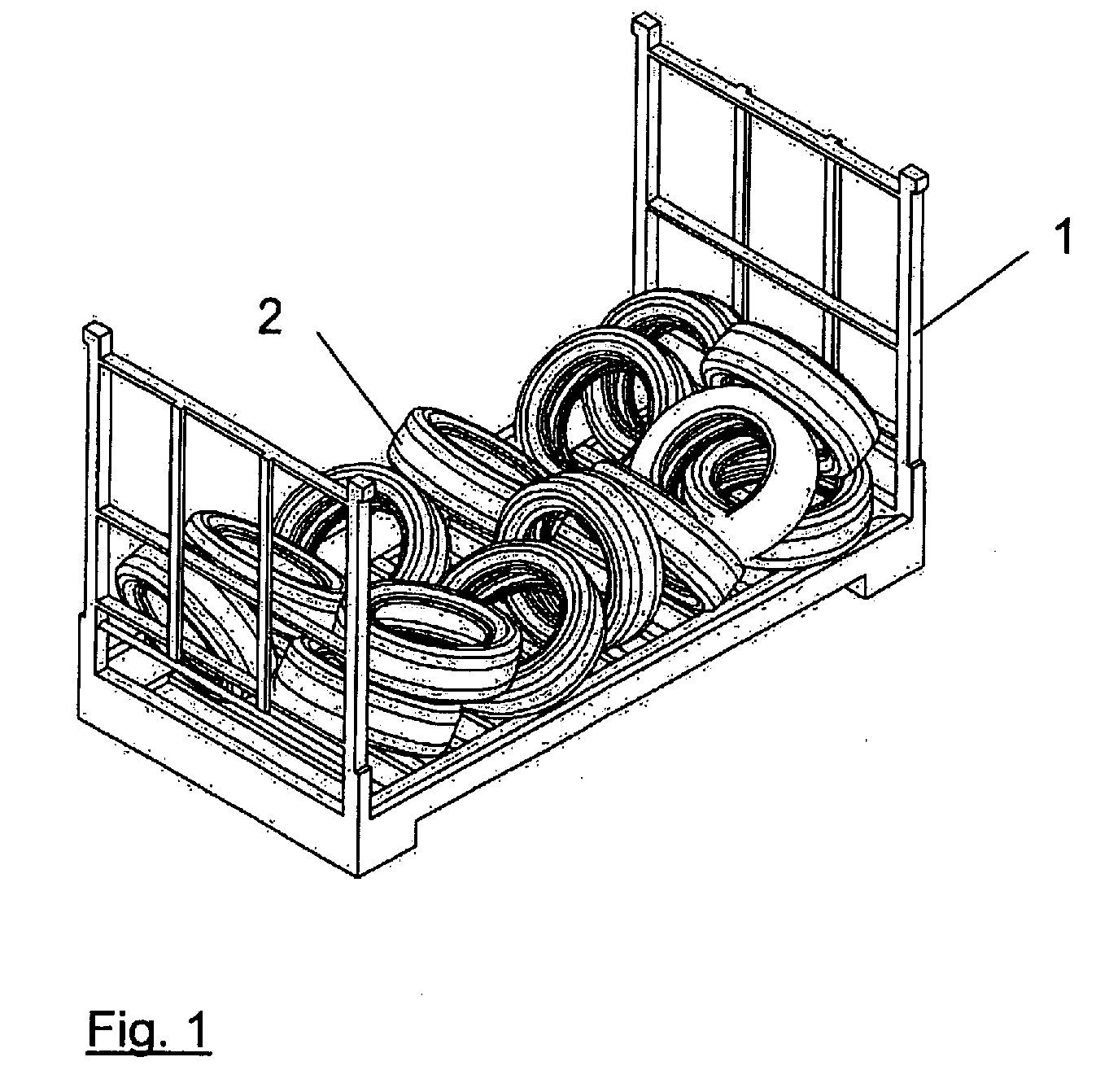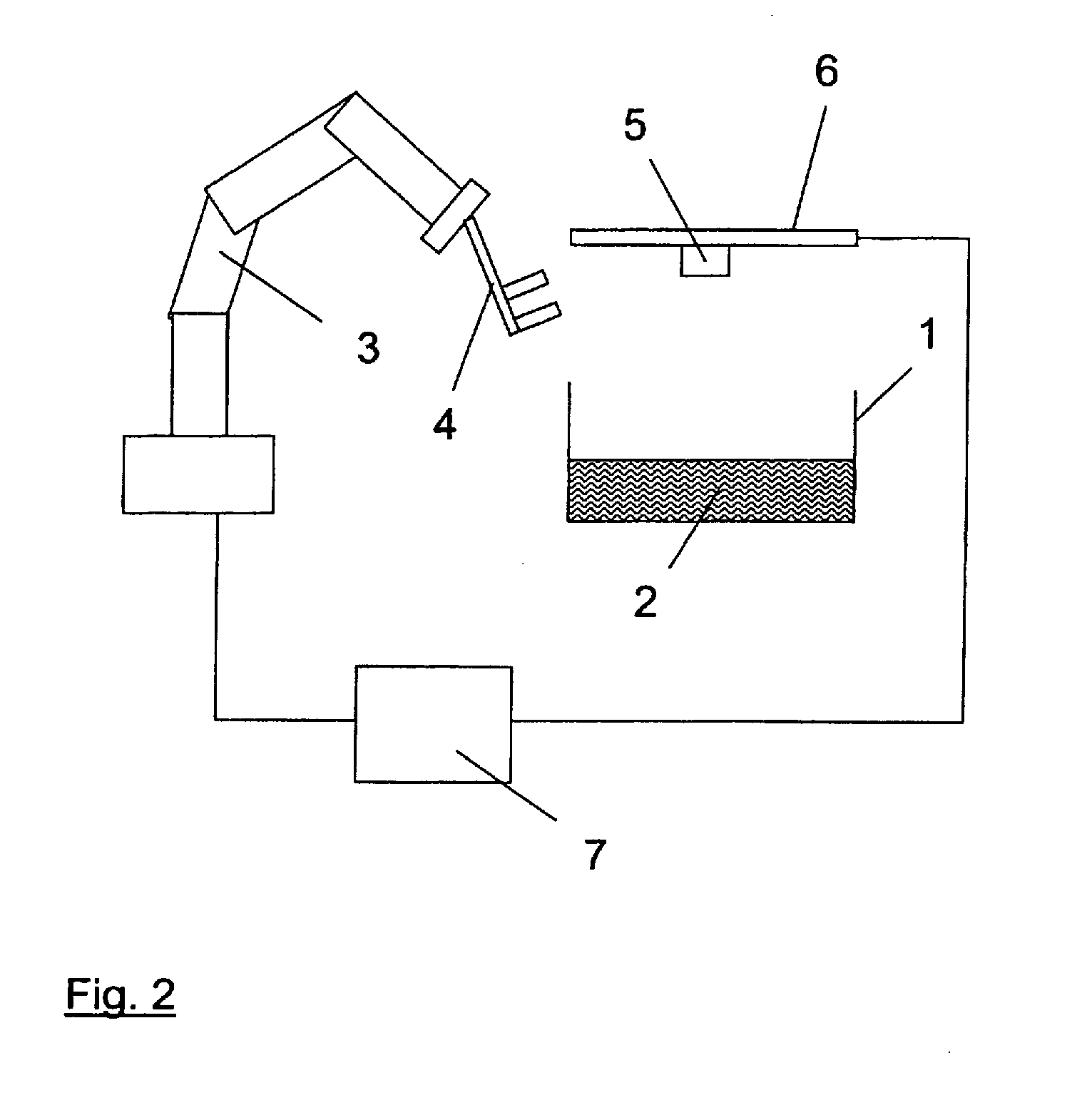Method And System For Depalletizing Tires Using a Robot
a robot and tire technology, applied in the field of robot-directed depalletizing tires, can solve the problems of not being able to automate unloading of tires, not being able to depalletize tires in a stacking pattern that is unknown in advance, and not being able to organize or only partially organize tires. the effect of palletizing
- Summary
- Abstract
- Description
- Claims
- Application Information
AI Technical Summary
Benefits of technology
Problems solved by technology
Method used
Image
Examples
Embodiment Construction
[0026]The depalletizing method and the associated depalletizing system according to the invention enable the automatic unloading of tires that are stacked on a transport unit with a robot (in particular a 6-axis articulated arm robot). In this regard FIG. 1 shows an example of a transport unit 1 on which are stacked multiple tires 2 (unorganized in the present case). Such a transport unit 1 is normally placed in an unloading region with a floor conveyor apparatus, for example a forklift or a lift trick. In the proposed method, such a transport unit 1 is unloaded with a depalletizing system as it is shown by way of example in FIG. 2.
[0027]FIG. 2 shows an exemplary depalletizing system according to the present invention in a significantly schematized presentation. The depalletizing system has a 6-axis articulated arm robot 3 with a gripper 4 that is coupled via a connection flange to the arm of the articulated arm robot 3. A linear axle 6 that bears a 3D sensor 5 is arranged above the...
PUM
 Login to View More
Login to View More Abstract
Description
Claims
Application Information
 Login to View More
Login to View More - R&D
- Intellectual Property
- Life Sciences
- Materials
- Tech Scout
- Unparalleled Data Quality
- Higher Quality Content
- 60% Fewer Hallucinations
Browse by: Latest US Patents, China's latest patents, Technical Efficacy Thesaurus, Application Domain, Technology Topic, Popular Technical Reports.
© 2025 PatSnap. All rights reserved.Legal|Privacy policy|Modern Slavery Act Transparency Statement|Sitemap|About US| Contact US: help@patsnap.com



